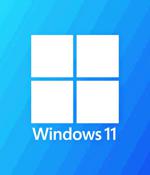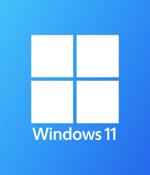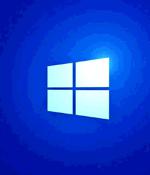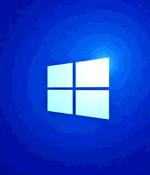Security News

Microsoft has acknowledged a new bug affecting some Windows 11 applications triggering launch issues and causing them to display errors after a system restore. The company said that "After running a System Restore to a previous restore point on a device that is running Windows 11, version 22H2, some Windows applications that use the MSIX Windows app package format may experience" various instability problems, including failures to launch, freezes, and crashes.

Microsoft wants to bulk up the security in Windows Pro editions by ensuring the SMB insecure guest authentication fallbacks are no longer the default setting in the operating system. The move, which is included in the Windows 11 Insider Preview Build 25276 released this month, means that systems with Windows 10 version 1709 or later and Windows Server 2019, SMB2, and SMB3 will no longer allow by default guest account access to a remote server or for those who provide invalid credentials to fall back to the guest account.

Thankfully, numerous apps are available to get your Windows 11 experience customized how you like while removing unwanted bloatware from the operating system. Below are three applications that can help you customize Windows 11 to how you like it.

Windows 11 is more or less similar to Windows 10, so if you're not happy with the new OS, you can try some new third-party programs to customize the experience and get the most out of Windows 11. Windows 11 is essentially Windows 10 with a new design, so it also comes with the same bloatware problem.

Microsoft has addressed a false positive triggered by a buggy Microsoft Defender ASR rule that would delete application shortcuts from the desktop, the Start menu, and the taskbar and, in some cases, render existing shortcuts unusable as they couldn't be used to launch the linked apps. The issue affected app shortcuts across onboarded devices after the Microsoft Defender for Endpoint attack surface reduction rule was triggered erroneously.

Microsoft is testing a new diagnostic tool in Windows 11 that lets you create live kernel memory dumps without disrupting the operation of Windows. A live kernel dump is a snapshot of the kernel's memory at the time of the dump, which is then saved to a file.

Included in the usual tsunami of fixes Microsoft issued this week as part of Patch Tuesday was one that took care of a connectivity problem for applications using the Open Database Connectivity interface. The ODBC problem was one of several stemming from the November Patch Tuesday updates that Microsoft had to address.

We and our store and/or access information on a device, such as cookies and process personal data, such as unique identifiers and standard information sent by a device for personalised ads and content, ad and content measurement, and audience insights, as well as to develop and improve products. With your permission we and our partners may use precise geolocation data and identification through device scanning.

Microsoft has published the Windows 10 KB5022282 and KB5022286 cumulative updates for versions 22H2, version 21H2, version 21H1, and 1809 to fix security vulnerabilities and resolve known bugs. This update is not available for Windows 10 1909 or Windows 10 2004.

Microsoft has addressed a known issue breaking provisioning on Windows 11 22H2 systems and leaving enterprise endpoints partially configured and failing to finish installing. The issue was first acknowledged in October 2022 when Redmond said using provisioning packages after installing the Windows 11 2022 Update might not work as expected, failing with 0x800700b7 errors.